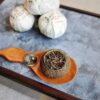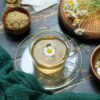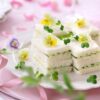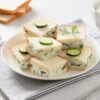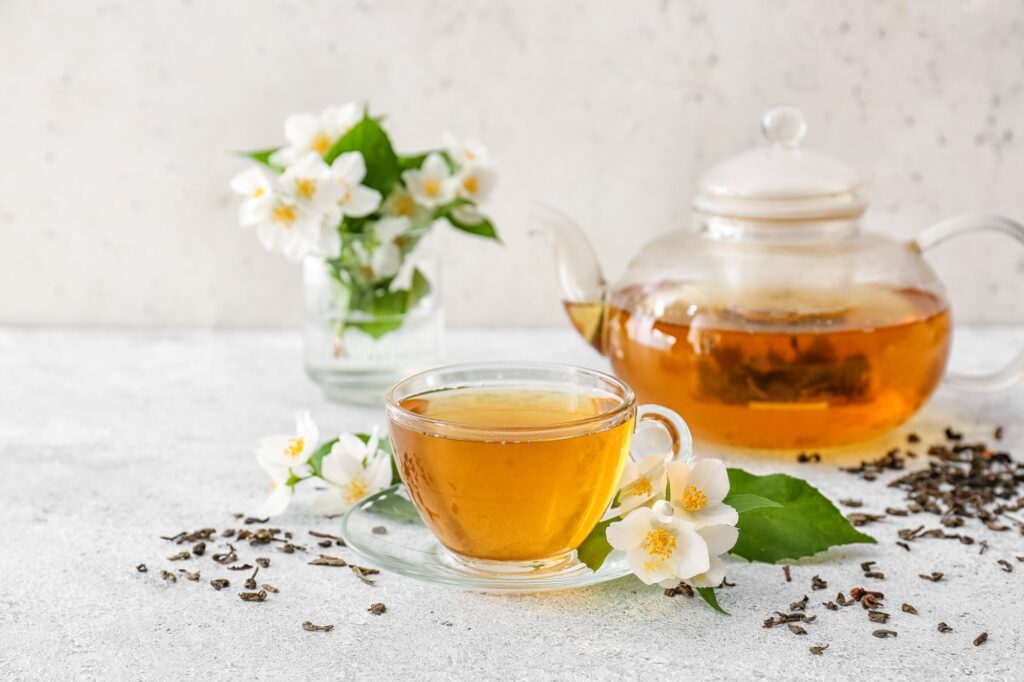
Step into the enchanting world of tea as we unravel the secrets of Jasmine tea, taking you on a fragrant journey like no other. Immerse yourself in the delicate aroma and smooth taste of this extraordinary brew, as we explore the origins, brewing methods, and health benefits of Jasmine tea.
Originating in China, Jasmine tea has been cherished for centuries for its exquisite floral fragrance. The leaves are meticulously scented with jasmine blossoms, resulting in a soothing and refreshing cup that captivates the senses.
But it’s not just about the taste and aroma – Jasmine tea also packs a powerful punch when it comes to health benefits. We will explore its antioxidant properties, stress-relieving effects, and potential weight management benefits.
Unlock the secrets of Jasmine tea with our comprehensive guide and embark on a fragrant journey that will transport you to the sophisticated world of tea.
History and Origin of Jasmine Tea
Jasmine tea has a rich history that traces back to ancient China. The tradition of infusing tea leaves with jasmine blossoms dates back over a thousand years. The process of making Jasmine tea involves layering freshly plucked tea leaves with jasmine flowers during their blooming season. This allows the tea leaves to absorb the floral fragrance, resulting in a unique and captivating brew.
Legend has it that the practice of scenting tea leaves with jasmine began during the Song Dynasty. It is said that a tea farmer discovered the intoxicating fragrance of jasmine flowers and decided to experiment with infusing it into his tea. The result was a harmonious blend of floral and tea flavors that quickly gained popularity among the nobility.
Over time, the art of making Jasmine tea spread throughout China and eventually found its way to other parts of the world. Today, Jasmine tea is enjoyed by tea enthusiasts worldwide, who appreciate its delicate and aromatic qualities.
The Making of Jasmine Tea
The making of Jasmine tea is a meticulous process that requires precision and patience. The quality of the tea leaves and jasmine flowers, as well as the timing and temperature, all play a crucial role in achieving the perfect infusion.
To create Jasmine tea, freshly plucked tea leaves are carefully layered with jasmine blossoms. The tea leaves absorb the fragrance of the flowers over several hours, allowing the flavors to meld together. This process is repeated multiple times, sometimes up to six or seven times, to achieve the desired aroma and taste.
The best Jasmine tea is made with high-quality tea leaves, such as green or white tea, which have a delicate and mellow flavor that complements the floral notes of the jasmine flowers. The most skilled tea artisans are able to strike the perfect balance between the tea leaves and jasmine blossoms, resulting in a harmonious and aromatic brew.
Varieties of Jasmine Tea
Jasmine tea comes in a variety of forms, each with its own unique characteristics. The most popular varieties include Green Jasmine tea, White Jasmine tea, and Jasmine Pearl tea.
Green Jasmine tea is made from young tea leaves that are lightly oxidized. It has a fresh and grassy flavor that is perfectly complemented by the floral notes of jasmine. White Jasmine tea, on the other hand, is made from young tea buds and has a delicate and subtle taste. The jasmine blossoms enhance the natural sweetness of the tea, resulting in a smooth and refreshing cup.
Jasmine Pearl tea is a specialty tea that consists of hand-rolled tea leaves and jasmine flowers. The tightly rolled pearls unfurl when steeped, releasing a burst of fragrance and flavor. This variety is highly prized for its complexity and is often considered the pinnacle of Jasmine tea.
Brewing and Serving Jasmine Tea
To fully appreciate the flavors and aromas of Jasmine tea, it’s important to brew it properly. Begin by heating water to around 175°F (80°C), as higher temperatures can result in a bitter taste. Place a teaspoon of Jasmine tea leaves in a teapot or cup and pour the hot water over them. Let the tea steep for about 2-3 minutes, or until the desired strength is achieved.
When serving Jasmine tea, it’s customary to use a clear glass or teacup to showcase the beautiful color of the tea. The delicate aroma should be savored as you take your first sip, allowing the flavors to unfold on your palate. For an added touch of elegance, serve Jasmine tea with a small dish of jasmine flowers to enhance the sensory experience.
Pairing Jasmine Tea with Food
Jasmine tea’s delicate flavors make it a versatile beverage that pairs well with a variety of foods. Its floral notes and refreshing taste make it an excellent accompaniment to light and delicate dishes, such as steamed fish or sushi. The tea’s natural sweetness also complements desserts like fruit tarts or coconut-based sweets.
For a unique twist, try using Jasmine tea as an ingredient in your cooking. The subtle floral flavors can add depth and complexity to dishes like rice pilaf or poached chicken. You can even infuse the tea into creams or custards for a fragrant and aromatic dessert.
Popular Brands and Where to Buy Jasmine Tea
When it comes to purchasing Jasmine tea, there are several reputable brands that offer high-quality options. Some popular brands include Teavana, Harney & Sons, and Art of Tea. These brands source their tea leaves and jasmine flowers from trusted suppliers, ensuring that you receive the best possible product.
In addition to traditional brick-and-mortar tea shops, you can also find a wide selection of Jasmine tea online. Websites like Amazon and specialty tea retailers offer a diverse range of options, allowing you to explore different varieties and brands from the comfort of your own home.
DIY Jasmine Tea Recipes
If you’re feeling adventurous, why not try making your own Jasmine tea creations? Here are a few DIY recipes to get you started:
1. Jasmine Green Tea Smoothie: Blend together a cup of brewed and chilled Jasmine green tea, a frozen banana, a handful of spinach, and a splash of almond milk for a refreshing and nutritious smoothie.
2. Jasmine Milk Tea: Brew a strong cup of Jasmine black tea and mix it with warm milk and a touch of honey for a comforting and fragrant beverage.
3. Jasmine Tea-Infused Sorbet: Steep a pot of Jasmine tea and let it cool. Mix the cooled tea with simple syrup and freeze it for a few hours, stirring occasionally, to create a refreshing and floral sorbet.
Get creative and experiment with different combinations to discover your own unique Jasmine tea creations!
Embrace the Fragrance of Jasmine Tea
Jasmine tea is more than just a beverage – it’s a sensory experience that transports you to a world of tranquility and elegance. From its rich history and meticulous production process to its health benefits and diverse varieties, Jasmine tea offers something for everyone.
So, next time you’re in need of a moment of relaxation or a burst of floral flavor, reach for a cup of Jasmine tea. Let the delicate aroma and smooth taste envelop your senses as you embark on a fragrant journey through the world of tea. Unlock the secrets of Jasmine tea and discover a brew that will captivate your senses and leave you craving more.
Embrace the fragrance of Jasmine tea and let its enchanting qualities enhance your tea-drinking experience. Cheers to a fragrant journey through the world of tea!

